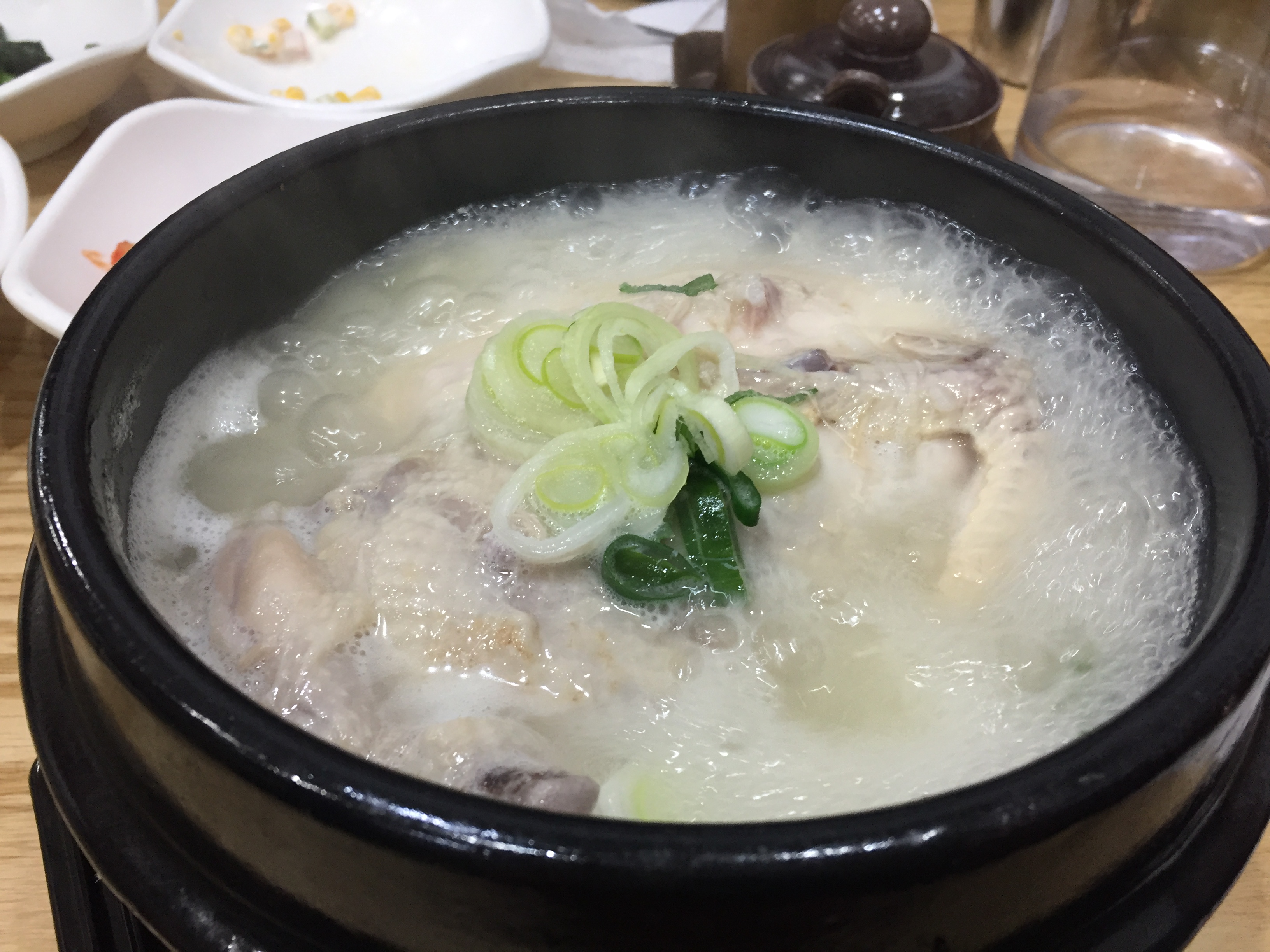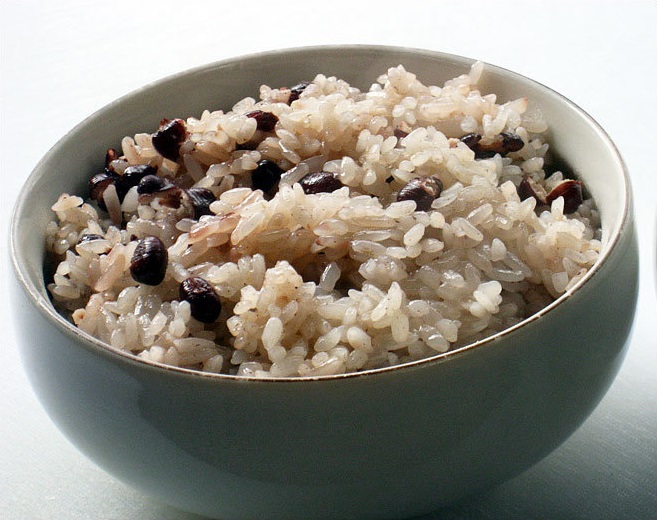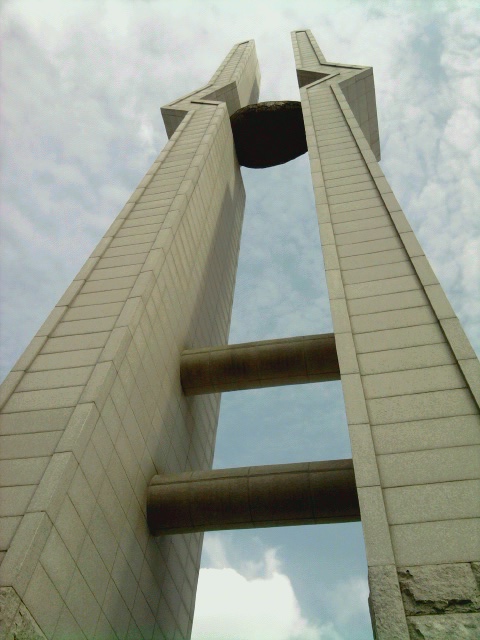|
Ori-tang
''Oritang'' () is a variety of '' guk'', Korean soup or stew made by slowly simmering duck and various vegetables. ''Ori'' means "duck" and ''tang'' is another name for ''guk'' in Korean. While its recipe depends on region and taste, the soup is generally in a form of a clear soup. Some variants can contain chili pepper powder to make the soup spicy like ''maeuntang'' (spicy fish soup) or roasted perilla seeds to thicken the dish. ''Oritang'' is a local specialty of Gyeonggi Province and South Jeolla Province, especially Gwangju City. In Gwangju, about 20 restaurants specializing in ''oritang'' and other duck dishes are centered on Yudong Alley in Buk District. See also * Samgyetang * List of duck dishes * List of soups * Korean cuisine * List of Korean dishes Below is a list of dishes found in Korean cuisine. Rice dishes * ''Bibimbap'' (, 'mixed rice'): rice topped with seasoned vegetables such as spinach, Edible mushroom, mushrooms, sea tangle, carrots, bean sprouts, a ... [...More Info...] [...Related Items...] OR: [Wikipedia] [Google] [Baidu] |
Samgyetang
''Samgye-tang'' (), or " ginseng chicken soup" * is a '' tang'' (Korean soup) that consists primarily of a whole young chicken ( ''poussin'') or quail filled with garlic, rice, jujube and ginseng. It is traditionally considered to be a health food. ''Samgye-tang'' is a representative summer health food. Soup made with chicken that is slightly larger than the chick is called ''yeonggye baeksuk'', and the chicken is divided into half is called ''banggye-tang''. History During the Joseon period (1392–1897), people enjoyed the numerous chicken soup dishes that were similar to ''samgye-tang'', including ''yeongye-tang'', ''chonggye-tang'', and ''hwanggye-tang''. While it was the custom to make a soup with young chicken and serve it to elders during the summer days, the chicken boiled with milkvetch roots and its broth were served to the sick queen during King Injo's reign. However, the description of the dish that most closely resembles today's form of ''samgye-tang'' can be fo ... [...More Info...] [...Related Items...] OR: [Wikipedia] [Google] [Baidu] |
Korea
Korea is a peninsular region in East Asia consisting of the Korean Peninsula, Jeju Island, and smaller islands. Since the end of World War II in 1945, it has been politically Division of Korea, divided at or near the 38th parallel north, 38th parallel between North Korea (Democratic People's Republic of Korea; DPRK) and South Korea (Republic of Korea; ROK). Both countries proclaimed independence in 1948, and the two countries fought the Korean War from 1950 to 1953. The region is bordered by China to the north and Russia to the northeast, across the Yalu River, Amnok (Yalu) and Tumen River, Duman (Tumen) rivers, and is separated from Japan to the southeast by the Korea Strait. Known human habitation of the Korean peninsula dates to 40,000 BC. The kingdom of Gojoseon, which according to tradition was founded in 2333 BC, fell to the Han dynasty in 108 BC. It was followed by the Three Kingdoms of Korea, Three Kingdoms period, in which Korea was divided into Goguryeo, Baekje, a ... [...More Info...] [...Related Items...] OR: [Wikipedia] [Google] [Baidu] |
Gyeonggi Province
Gyeonggi Province (, ) is the most populous province in South Korea. Seoul, the nation's largest city and capital, is in the heart of the area but has been separately administered as a provincial-level ''special city'' since 1946. Incheon, the nation's third-largest city, is on the coast of the province and has been similarly administered as a provincial-level ''metropolitan city'' since 1981. The three jurisdictions are collectively referred to as '' Sudogwon'' and cover , with a combined population of over 26 million - amounting to over half (50.25%) of the entire population of South Korea, and a third of the population of the Korean peninsula at the 2020 census. Etymology Its name, ''Gyeonggi'', means "京 (the capital) and 畿 (the surrounding area)". Thus, ''Gyeonggi Province'' can be translated as "Seoul and the surrounding areas of Seoul". History Gyeonggi Province has been a politically important area since 18 BCE, when Korea was divided into three nations durin ... [...More Info...] [...Related Items...] OR: [Wikipedia] [Google] [Baidu] |
List Of Korean Dishes
Below is a list of dishes found in Korean cuisine. Rice dishes * ''Bibimbap'' (, 'mixed rice'): rice topped with seasoned vegetables such as spinach, Edible mushroom, mushrooms, sea tangle, carrots, bean sprouts, and served with a dollop of ''gochujang'' (red pepper paste), and variations often include beef or egg. Everything (seasonings, rice and vegetables) is stirred together in one large bowl and eaten with a spoon. One popular variation of this dish, dolsot bibimbap (), is served in a heated stone bowl, which permits the dish to continue cooking after it is served, and in which a raw egg is cooked against the sides of the bowl. Yukhoe bibimbap () is another variant of bibimbap, comprising raw beef strips with raw egg and a mixture of soy sauce with Asian pear and gochujang. * ''Gimbap'' (literally, seaweed rice, 김밥) * ''Hoedeopbap'' (): Another variation of bibimbap using a variety of cubed raw fish * ''Boribap'' (): Barley cooked rice * ''Nurungji'' (): The crisp thin ... [...More Info...] [...Related Items...] OR: [Wikipedia] [Google] [Baidu] |
List Of Soups
This is a list of notable soups. Soups have been made since ancient times. Some soups are served with large chunks of meat or vegetables left in the liquid, while others are served as a broth. A broth is a flavored liquid usually derived from boiling a type of meat with bone, a spice mix, or a vegetable mix for a period of time in a stock. A potage is a category of thick soups, stews, or porridges, in some of which meat and vegetables are boiled together with water until they form a thick mush. Bisques are heavy cream soups traditionally prepared with shellfish, but can be made with any type of seafood or other base ingredients. Cream soups are dairy based soups. Although they may be consumed on their own, or with a meal, the canned, condensed form of cream soup is sometimes used as a quick sauce in a variety of meat and pasta convenience food dishes, such as casseroles. Similar to bisques, chowders are thick soups usually containing some type of starch. Coulis were ... [...More Info...] [...Related Items...] OR: [Wikipedia] [Google] [Baidu] |
Duck As Food
In cooking and gastronomy, duck or duckling is the meat of several species of bird in the family Anatidae, found in both fresh and salt water. Duck is eaten in many cuisines around the world. It is a high-fat, high-protein meat rich in iron. Duckling nominally comes from a juvenile animal, but may be simply a menu name. One species of freshwater duck, the mallard, has been domesticated; the domesticated duck is a common livestock bird in a variety of cultures. The Pekin duck is another livestock breed of importance, particularly in North America. Magret refers specifically to the breast of a moulard or Muscovy (or Barbary) duck that has been force fed to produce foie gras. Duck meat Duck is particularly predominant in the Chinese cuisine—a popular dish is Peking duck. Duck meat is commonly eaten with scallions, cucumbers and hoisin sauce wrapped in a small spring pancake made of flour and water or a soft, risen bun known as gua bao. In Cantonese cuisine ... [...More Info...] [...Related Items...] OR: [Wikipedia] [Google] [Baidu] |
Buk District, Gwangju
Buk District () is a district situated in the northern part of the city of Gwangju, South Korea. It is similar to a ward in the United States. The district is by far the most populated district in Gwangju, and elects two lawmakers for the South Korean National Assembly. Gwangju Station is here. Education There are a significant number of elementary, middle, and high schools located in the area. In Gwangsan District, neighborhoods such as Cheomdan, Suwan, Sinchang, and Unnam have seen a population increase due to large-scale residential developments. However, the demand for high schools has not kept pace with the growing population. As a result, middle school students from Gwangsan District Gwangsan District () is a district, similar to a ward, situated in Gwangju, South Korea. The total population of the district, as of September 2004, is 295,294, and the population density of the district is 1,085 per 1 km. Its area is about ... are often assigned to high schools in Buk ... [...More Info...] [...Related Items...] OR: [Wikipedia] [Google] [Baidu] |
Lonely Planet
Lonely Planet is a travel guide book publisher. Founded in Australia in 1973, the company has printed over 150 million books. History 20th century Lonely Planet was founded by married couple Maureen Wheeler, Maureen and Tony Wheeler. In 1972, they embarked on an overland trip through Europe and Asia to Australia following the route of the Oxford and Cambridge Far Eastern Expedition. The company name originates from the Mondegreen, misheard "lovely planet" in a song written by Matthew Moore. Lonely Planet's first book, ''Across Asia on the Cheap'', had 94 pages; it was written by the couple in their home. The original 1973 print run consisted of stapled booklets with pale blue cardboard covers. Wheeler returned to Asia to write ''Across Asia on the Cheap: A Complete Guide to Making the Overland Trip'', published in 1975. The Lonely Planet guide book series initially expanded to cover other countries in Asia, with the India guide book in 1981, and expanded to the rest of th ... [...More Info...] [...Related Items...] OR: [Wikipedia] [Google] [Baidu] |
Gwangju
Gwangju (; ), formerly romanized as Kwangju, is South Korea's list of cities in South Korea, sixth-largest metropolis. It is a designated Special cities of South Korea, metropolitan city under the direct control of the central government's Home Minister. The city was also the capital of South Jeolla Province until the provincial office moved to the southern village of Namak, South Korea, Namak in Muan County in 2005 because Gwangju was promoted to a Special cities of South Korea, metropolitan city and was independent of South Jeolla Province. Its name is composed of the words ''gwang'' () meaning "light" and ''ju'' () meaning "province". Gwangju was historically recorded as ''Muju'' (), in which "Silla merged all of the land to establish the provinces of Gwangju, Ungju, Jeonju, Muju and various counties, plus the southern boundary of Goguryeo and the ancient territories of Silla" in the ''Samguk sagi.'' In the heart of the agricultural Jeolla region, the city is also famous for ... [...More Info...] [...Related Items...] OR: [Wikipedia] [Google] [Baidu] |
South Jeolla Province
South Jeolla Province (), formerly South Chŏlla Province, also known as Jeonnam (), is a province in the Honam, Honam region, South Korea, and the Provinces of Korea, southernmost province in mainland Korea. South Jeolla borders the provinces of North Jeolla to the north, South Gyeongsang to the northeast, and Jeju Province, Jeju to the southwest in the Korea Strait. Suncheon is the largest city in the province, closely followed by Yeosu. Other major cities include Mokpo, Gwangyang and Naju. Jeolla Province, Jeolla-do, including both North Jeolla Province, North and South Jeolla, was the first province out of the Eight Provinces of Korea, Eight Provinces system to have its 1000th year anniversary in 2018, as the name 'Jeolla-do' was established in 1018, during Hyeonjong of Goryeo, Hyeonjong of Goryeo's 9th year in power. History Proto Three Kingdoms period During the Samhan period, South Jeolla belonged to Mahan () Three Kingdoms period In the Three Kingdoms period, it be ... [...More Info...] [...Related Items...] OR: [Wikipedia] [Google] [Baidu] |
Duck
Duck is the common name for numerous species of waterfowl in the family (biology), family Anatidae. Ducks are generally smaller and shorter-necked than swans and goose, geese, which are members of the same family. Divided among several subfamilies, they are a form taxon; they do not represent a monophyletic group (the group of all descendants of a single common ancestral species), since swans and geese are not considered ducks. Ducks are mostly aquatic birds, and may be found in both fresh water and sea water. Ducks are sometimes confused with several types of unrelated water birds with similar forms, such as loons or divers, grebes, gallinules and coots. Etymology The word ''duck'' comes from Old English 'diver', a derivative of the verb 'to duck, bend down low as if to get under something, or dive', because of the way many species in the dabbling duck group feed by upending; compare with Dutch language, Dutch and German language, German 'to dive'. This word replaced ... [...More Info...] [...Related Items...] OR: [Wikipedia] [Google] [Baidu] |







